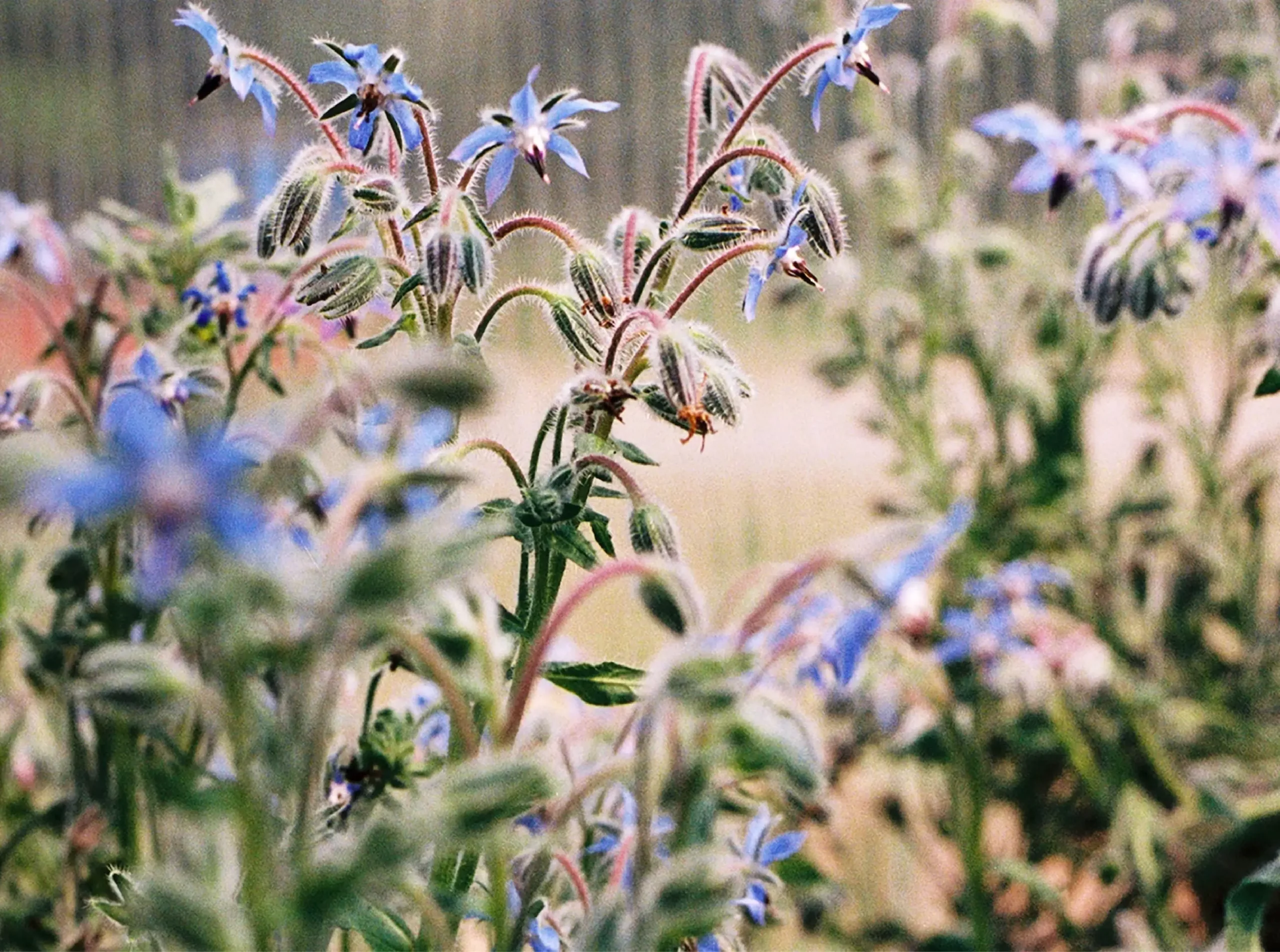
Writer and floral artist Janelle Zara gets nose-deep with art director and author Monica Nelson about her new book, Edible Flowers, and the stories we find in observing the natural world.
Writer and floral artist Janelle Zara gets nose-deep with art director and author Monica Nelson about her new book, Edible Flowers, and the stories we find in observing the natural world.
Her latest project, Edible Flowers: How, Why, and When We Eat Flowers, a new book with Monacelli Press, extols the deep cultural resonance that flowers have had around the world, artfully combining facts, recipes and personal essays from artists, chefs, and writers, with photography by Adrianna Glaviano. Nelson, however, prefers a simpler description: “I wrote and designed a book based on the impulse to get really close to flowers.”
“Once you realize that each flower has a unique story, it becomes more than something that just sits in an arrangement.”


Q. Edible Flowers features more than 100 varieties, from acacia to zinnia. What was your initial inspiration for creating this practical guide, and how did you form the lineup?
I wouldn’t really say it’s a practical guide as much as a cultural history course, or a primer for curiosity about flowers — it’s organized so that each flower has a little story of how it’s been used, tracing back to its indigenous roots. I had created a list of about 60, but as photographer Adrianna Glaviano and I started shooting in June 2020, we were led to different things. Our 30 contributors were a very global mix of people, and some of them exposed me to totally different varieties that I had never heard of. We went to a lot of organic farms, eating cornflowers and marigolds. I wanted the book to feel discoverable as you’re immersed in imagery. We shot until May, right up until we had to send in the pages to the publisher, in order to get all the spring flowers.
Q. You also include a surprising range of recipes for edible flowers, which, personally, I’ve only ever encountered as decoration. What kinds of research did you put into these recipes, and were there any new flavors that surprised you?
We kept the recipes pretty simple — each just a list of ingredients and a paragraph. We ate a lot and we cooked a lot, making tons of different salads and quick-frying battered chamomile and a few other things. We were constantly experimenting. A lot of it didn’t make it into the book, but it was definitely fun to try. We have rose syrup and candied violets, both of which are very sweet and simple to make. But what I love is that you can use the essence of a flower in savory things that you don’t really think about. One of the recipes I find really lovely is from Chula Galvez. She explains how you can prolong the life of butter if you wrap it in flowers. Heidi Swanson gave us a recipe for chamomile miso. And nasturtium has a flavor that definitely sticks with me: It’s very peppery, like when you eat a really fresh leaf of arugula, but even spicier than that. It makes an amazing pesto that we included in the book.


Q. There’s also a storytelling element to Edible Flowers that goes deeper than just food. The underlying theme seems to be about how flowers resonate across cultures, which comes through in the range of contributors you’ve included.
It was really important to me to have multiple layers of content for the book, and to include multiple voices. There are two types of contributors that I reached out to: The recipes are by food-oriented people, and then there are 12 contributors called “Flower Eaters,” mostly writers and artists who wrote essays about their own memories of edible flowers. Claire Ratinon, for example, is incredible — she’s English, and writes a lot about decolonization in the garden. When I asked her what flower she would want to write about, she chose okra, and referenced a story about how African women had brought them across the Atlantic by braiding the seeds into their hair. Decolonization is ultimately about origin stories, and tracing things back to where they came.
Q. You wrote an introduction to the book that I found particularly gorgeous, touching not only on the beauty of flowers, but their timelessness, and near-universal appeal.
We’re drawn naturally to flowers, but what piques my interest about them and the natural world is about more than just beauty. I have a master’s in design history, and so I’m always interested in the trajectory and history of things: the people, stories, and symbolism that go into an object. So many flowers have traveled the world, having been traded like spices. Marigold, for example, is native to the Americas, but if you had asked me 10 years ago where they’re from, I would’ve probably guessed India, where it’s one of the main flowers used in Diwali festivals. To me, that’s the exciting part of the research: to really look at something as it exists in culture, then to challenge that. Once you realize that each flower has a unique story, it becomes more than something that just sits in an arrangement.


Janelle Zara is a Los Angeles-based writer specializing in art and design, particularly where they intersect with popular culture. She is the author of Masters at Work: Becoming an Architect, and a contributor to The Guardian, Architectural Digest, Artnet, and many more.
Editor: Aileen Kwun
Photography: Portrait of Monica Nelson by Melissa Levin. Photo of tangerine cake with frosting and flowers by Agostino Galvez. All other images by Adrianna Glaviano for Edible Flowers, courtesy Monacelli Press and Phaidon.
DISCOVER MORE
Visit phaidon.com






